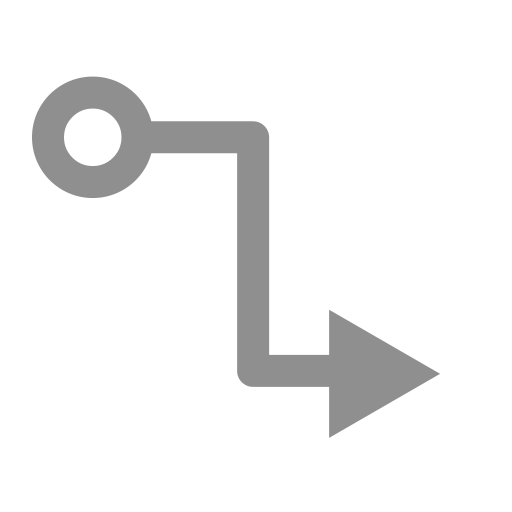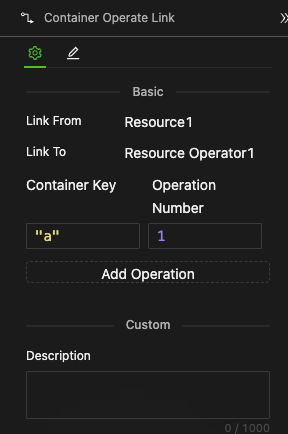Container Operate Connectors
Icon

Function
The Container Operate Connector, also known as the Operate Connector, connects Container Operate components with Containers. Its primary role is to manage the specific "content" and its quantity within resource or entity containers during operations, indicating the inflow and outflow of this content.
Key Points
- Container Operate Connectors are designed to be used exclusively with Container Operate components. They provide essential information such as the direction, the content to be operated on, and content quantity during operations.
- It only operates in one direction, with the Operate Connector extending from the Container Operate component to the Container, symbolizing inflow, and vice versa, symbolizing outflow.
- For resource containers, it is necessary to specify the specific "content" and its quantity.
Use the Container Operate Connectors with the Container Operate components and the Containers for optimal performance. This ensures smooth integration. See the related chapters for details.
Usage
For Resource Containers
When operating on a resource container, here's how to manage operations:
Graphical Modeling
-
Specify the Direction
When the Operate Connectors extends from the Container to the Container Operate component, it implies resource outflow. Conversely, it means resource inflow.
-
Specify the Content and its Quantity
In the properties panel, use the Container key to specify the Content to be operated on and the Operation Number to specify its Quantity. See the Settings on the Properties Panel for details.
Settings on the Properties Panel

-
Add Operation
Click the "Add Operation" button to create a new operation row. Multiple operations can be performed simultaneously, with each operation set as follows:
-
Specify the Resource (Container key)
The input field accepts an expression returning a String. This value should be the key to the connected container.
-
Specify the Quantity (Operation Number)
- The input field accepts an expression returning a non-negative number.
- Leaving it blank implies Automatic mode, which will display "Auto."
- In exchange mode, where a conservation mechanism is present, the last N operation can use automatic mode if you specify the quantity of the same resource during all the N-1 operations.
Examples
Each Tick resource operation withdraws 1 unit of resource from the Resource1 container, which initially has a value of 10.
The WalletA container pays USDC in exchange for WETH from the Pool container. Compared to the Connectors that extract resources from containers, those that deposit resources into containers have adopted an automatic mode.